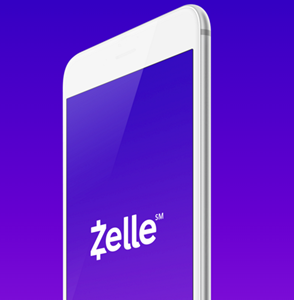Venmo's Bold Leap: From Dinner Tabs to Digital Commerce Powerhouse
February 28, 2025, 11:27 pm

Location: United States, California, San Jose
Employees: 10001+
Founded date: 1998
Total raised: $45K

Location: United States, New York
Employees: 1001-5000
Founded date: 2013
Total raised: $75K
In the fast-paced world of digital payments, Venmo is gearing up for a transformation. PayPal, its parent company, has set ambitious goals for Venmo, aiming for $2 billion in revenue by 2027. This isn’t just a dream; it’s a strategy. Venmo, once known primarily for splitting dinner bills, is poised to become a dominant player in the digital commerce landscape.
PayPal is facing fierce competition. Cash App, Zelle, and Apple Pay are all vying for the same market. Each competitor has its strengths, but PayPal believes Venmo can rise above the fray. The company’s stock surged 40% in 2024, but recent dips signal that the road ahead is rocky. CEO Alex Chriss, who took the reins in September 2023, is determined to steer the ship back on course.
At PayPal’s first investor day in four years, Chriss laid out a clear vision. Venmo is not just a peer-to-peer payment app; it’s the future of money movement. With 90 million users in the U.S., Venmo has become a cultural phenomenon. Yet, monetization remains a challenge. Transactions between friends generate little revenue.
To tackle this, PayPal is expanding Venmo’s role in digital commerce. The strategy is multi-faceted. First, there’s a push for in-store and online spending. Venmo aims to be the default payment method for everyday purchases. This includes promoting its debit card and encouraging merchants to adopt “Pay With Venmo.” The goal is simple: keep users engaged and funds within the app.
The numbers are promising. Monetized monthly active users grew by 24% in 2024. Venmo’s user base is expected to see mid-single-digit growth through 2027. The debit card’s total payment volume is projected to rise at over 20% annually. “Pay With Venmo” is expected to double that growth rate.
Chriss is focused on transaction margins. After a decline in 2022 and 2023, margins rebounded in 2024. The long-term targets are ambitious: high single-digit growth in transaction margin dollars and low teens earnings growth per share by 2027.
Partnerships are key to this strategy. Venmo has teamed up with major players like DoorDash, Starbucks, and Ticketmaster. These collaborations are crucial for expanding Venmo’s reach into business transactions. In the latest quarter, the number of merchants using “Pay With Venmo” jumped by 50%. This momentum is vital for increasing transaction volume and profitability.
But the road to success is not without hurdles. The 1099-K tax rules are a significant concern for users. This form reports payments for goods and services received through payment apps. The threshold for reporting was lowered to $600, creating confusion among users. Many may not realize that personal transactions, like paying a friend back for dinner, should not be reported.
The IRS has implemented a phased approach to the new reporting requirements. In 2024, the threshold is set at $5,000, but by 2026, it will drop to $600. This change means more users will receive 1099-K forms, even for casual transactions. The confusion could deter users from fully embracing Venmo for business purposes.
While Venmo is expanding its business capabilities, it must also educate users about these tax implications. Misunderstandings could lead to frustration and mistrust. PayPal needs to ensure that users know when to report income and how to handle incorrect 1099-K forms.
The competitive landscape is ever-evolving. Zelle, for instance, operates differently. It transfers funds directly between bank accounts, avoiding the reporting requirements that apply to Venmo and Cash App. This distinction could give Zelle an edge among users who prefer simplicity.
As Venmo continues to grow, it must balance its identity as a peer-to-peer payment app with its ambitions in the business realm. The challenge lies in maintaining user trust while pushing for greater monetization.
In conclusion, Venmo is at a crossroads. With a clear strategy and ambitious goals, it aims to redefine its role in the digital payment ecosystem. The journey will be challenging, but the potential rewards are immense. If PayPal can successfully navigate the complexities of competition and user education, Venmo could emerge as a powerhouse in digital commerce. The future of money movement is at stake, and Venmo is ready to seize it.
PayPal is facing fierce competition. Cash App, Zelle, and Apple Pay are all vying for the same market. Each competitor has its strengths, but PayPal believes Venmo can rise above the fray. The company’s stock surged 40% in 2024, but recent dips signal that the road ahead is rocky. CEO Alex Chriss, who took the reins in September 2023, is determined to steer the ship back on course.
At PayPal’s first investor day in four years, Chriss laid out a clear vision. Venmo is not just a peer-to-peer payment app; it’s the future of money movement. With 90 million users in the U.S., Venmo has become a cultural phenomenon. Yet, monetization remains a challenge. Transactions between friends generate little revenue.
To tackle this, PayPal is expanding Venmo’s role in digital commerce. The strategy is multi-faceted. First, there’s a push for in-store and online spending. Venmo aims to be the default payment method for everyday purchases. This includes promoting its debit card and encouraging merchants to adopt “Pay With Venmo.” The goal is simple: keep users engaged and funds within the app.
The numbers are promising. Monetized monthly active users grew by 24% in 2024. Venmo’s user base is expected to see mid-single-digit growth through 2027. The debit card’s total payment volume is projected to rise at over 20% annually. “Pay With Venmo” is expected to double that growth rate.
Chriss is focused on transaction margins. After a decline in 2022 and 2023, margins rebounded in 2024. The long-term targets are ambitious: high single-digit growth in transaction margin dollars and low teens earnings growth per share by 2027.
Partnerships are key to this strategy. Venmo has teamed up with major players like DoorDash, Starbucks, and Ticketmaster. These collaborations are crucial for expanding Venmo’s reach into business transactions. In the latest quarter, the number of merchants using “Pay With Venmo” jumped by 50%. This momentum is vital for increasing transaction volume and profitability.
But the road to success is not without hurdles. The 1099-K tax rules are a significant concern for users. This form reports payments for goods and services received through payment apps. The threshold for reporting was lowered to $600, creating confusion among users. Many may not realize that personal transactions, like paying a friend back for dinner, should not be reported.
The IRS has implemented a phased approach to the new reporting requirements. In 2024, the threshold is set at $5,000, but by 2026, it will drop to $600. This change means more users will receive 1099-K forms, even for casual transactions. The confusion could deter users from fully embracing Venmo for business purposes.
While Venmo is expanding its business capabilities, it must also educate users about these tax implications. Misunderstandings could lead to frustration and mistrust. PayPal needs to ensure that users know when to report income and how to handle incorrect 1099-K forms.
The competitive landscape is ever-evolving. Zelle, for instance, operates differently. It transfers funds directly between bank accounts, avoiding the reporting requirements that apply to Venmo and Cash App. This distinction could give Zelle an edge among users who prefer simplicity.
As Venmo continues to grow, it must balance its identity as a peer-to-peer payment app with its ambitions in the business realm. The challenge lies in maintaining user trust while pushing for greater monetization.
In conclusion, Venmo is at a crossroads. With a clear strategy and ambitious goals, it aims to redefine its role in the digital payment ecosystem. The journey will be challenging, but the potential rewards are immense. If PayPal can successfully navigate the complexities of competition and user education, Venmo could emerge as a powerhouse in digital commerce. The future of money movement is at stake, and Venmo is ready to seize it.

